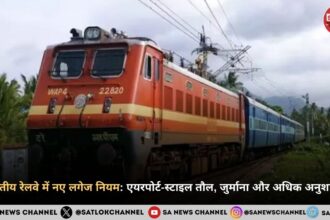India’s migration pattern is flipping. Emerging post-COVID trends suggest that by 2026, 60% of urban youth may prefer returning to villages, seeking stability over city hustle. A CSDS 2021 survey found that 80% of returnees carry urban skills and values back home. The pandemic hit 450 million internal migrants hard, with 88% in the informal sector (Stranded Workers Action Network, 2020). This reverse flow is not retreat, it’s a chance to rebuild a stronger rural economy. This blog covers reasons, benefits, real stories, and supportive government schemes.
Reverse Migration Trend: 2026 Forecast
Nearly one-third of India’s workforce migrates internally, mostly rural-to-urban (CMIE data).
The urban population may hit 600 million by 2030, yet the post-pandemic mood is changing. Young migrants now eye villages for security and opportunity, potentially slowing rapid urbanization and rebalancing growth.
The Scale of Reverse Migration: Numbers That Tell the Story
The COVID-19 pandemic acted as a stress test for India’s urban dream.
According to the Periodic Labour Force Survey (PLFS) 2020–21, approximately 11.1% of total migrant workers were classified as reverse migrants who returned home and did not re-migrate within the survey year. While this may seem modest, the absolute number is staggering-over 40 million individuals were estimated to have returned during the first lockdown alone (World Bank, 2021).
A joint study by Azim Premji University and Collaborative Research tracked 5,000 returnees across six states and found that only 29% had returned to cities by mid-2021, with 71% choosing to stay back.
Also Read: Water Conservation: The Need of the Hour
Among the youth (18–35 years), 62% expressed a desire to avoid urban migration in the future-a sentiment that aligns closely with the projected 60% preference shift by 2026.
This isn’t just a temporary blip. CMIE’s Consumer Pyramids Household Survey (2022) revealed that rural wage growth outpaced urban informal wages for the first time in a decade, narrowing the income gap and making villages economically competitive.
Reasons: Why Do Youth Want to Return?
Challenges of City Life
- Overcrowding, poor infrastructure, sky-high rents.
- 88% of migrant workers lack social security (SAN, 2020).
- Sudden lockdown job losses proved urban informal work is fragile.
Urban Burnout: The Hidden Mental Health Cost
Beyond economics, a silent crisis fuels reverse migration-urban burnout and mental health decline.
A 2022 Lancet study on migrant workers in Delhi and Mumbai found that 68% reported chronic stress, 41% showed symptoms of anxiety, and 1 in 4 experienced sleep disorders due to long commutes, unsafe housing, and job insecurity. In contrast, returnees in Bihar and Uttar Pradesh reported improved mental well-being within 6 months, citing stronger family support, cleaner air, and predictable routines. This psychological shift is reshaping aspirations. The city is no longer the only symbol of success.
Rural Allure and Opportunity
Returnees bring city-honed skills. COVID sparked rural startups-innovative farming, handicrafts on e-marketplaces (e-NAM, Amazon Saheli), and dairy units. Villages are turning into viable economic hubs.
Benefits and Solutions for a Resilient Rural India
Economic Opportunities
- Land Leasing: Progressive laws in Rajasthan, Madhya Pradesh allow formal leasing for agribusiness.
- E-Marketplaces: Direct-to-consumer platforms (e-NAM, ONDC) cut middlemen, boost income.
- Skill-Based Jobs: Returnees start poultry, food processing, or solar micro-grids.
Role of Women in Reverse Migration
One of the most transformative outcomes? Women are leading the change.
- 50% of SVEP entrepreneurs are women (2024 data).
- Returnee husbands often free women to start SHG-based businesses (pickles, papads, handicrafts).
- Jeevika (Bihar) and Kudumbashree (Kerala) models show ₹2 return per ₹1 invested in women-led rural enterprises.
Government Policies
- MGNREGA: 100 days guaranteed wage work; demand rose 50% post-lockdown.
- PM-KISAN: ₹6,000 yearly support to farmer families.
- SVEP (Startup Village Entrepreneurship Program): Funds and training for rural micro-enterprises.
- Digital India: High-speed internet enables e-commerce and remote work in villages.
We are not residents of this world ?
Amidst the race between the village and the city, there is something very important that needs attention. If we pay attention to that, this race itself will end.
‘We are not residents of this world,’ Saint Rampal Ji Maharaj repeatedly says this in his spiritual discourses. ‘Our true home is Satlok/ Sachkhand.’ Actually, we need to perform Reverse Migration to go there. What Satlok is and how we arrived here if we are residents of Satlok, all this you can learn in the description of Creation of the Nature as revealed by Saint Rampal Ji Maharaj (Click the link to listen).
FAQs on Reverse Migration 2026
Q: Why may 60% of youth return?
Urban job insecurity (88% informal workers unprotected) and COVID distress; villages now offer MGNREGA, e-marketplaces, and startup scope.
Q: What are the benefits?
Rural economy gets fresh skills, capital, and entrepreneurship; reduces urban strain.
Q: Which schemes help?
MGNREGA, PM-KISAN, SVEP, and Digital India bridge the rural-urban gap.
Q: Main challenge?
Closing infrastructure and sustained job gaps to retain returnees long-term.









